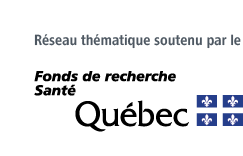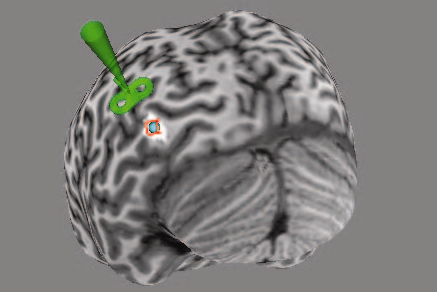The role of human brain area hMT+ in the perception of global motion investigated with repetitive transcranial magnetic stimulation (rTMS). Kaderali S, Kim YJ, Reynaud A, Mullen KT. Brain Stimul. 2015 Mar-Apr;8(2):200-7.
Impact scientifique: Cette étude a premièrement validé l’utilisation de la cTBS en tant qu’outil pour altérer le fonctionnement de l’aire hMT+. Ainsi, elle apporte des preuves supplémentaires que l’aire hMT+ est impliquée dans l’analyse du mouvement global à la fois chromatique et achromatique. L’aire hMT+ contribue au mouvement chromatique isoluminant. Les résultats indiquent un lien causal entre l’activité neuronale dans l’aire hMT+ et la perception du mouvement chromatique.
* * *
Résumé original
Background: Psychophysical evidence suggests that the perception of the motion and color of moving stimuli are determined separately in the human brain. Here we aim to determine the role of visual cortical areas hMTþ and V1/V2 in each task by measuring the effect of rTMS of each area using an off-line continuous theta-burst stimulation (cTBS) protocol.
Methods: In the motion task, the direction of moving dots was identified using a global motion stimulus that avoids tracking, and in the detection task for the same stimulus, the presence of the dots was detected regardless of motion. Performance was measured using forced-choice methods in 8 subjects, both before and at 4 time-intervals in the 1-hour after brain stimulation. All experiments were done using achromatic and isoluminant, red-green chromatic stimuli.
Results: Performance on global motion for both achromatic and chromatic stimuli was significantly impaired following cTBS of visual area hMTþ, with a maximum effect occurring 11 min after stimulation. In comparison, there was no effect of cTBS on the motion task for areas V1/V2 or the vertex (control).
cTBS did not affect the detection task in either area.
Conclusions: Our experiments validate the use of cTBS as an advantageous off-line rTMS protocol for studying visual areas. The results indicate a causal link between neural activity in area hMTþ and perception of motion of isoluminant chromatic stimuli.We conclude that area hMTþ is part of a common pathway processing the global motion of chromatic and achromatic stimuli, but is not involved in their detection.
Transcranial Magnetic Stimulation (TMS): Functionally mapped visual area targeted with the TMS
coil using the Brainsight software (Rogue Research Inc., Montreal).



